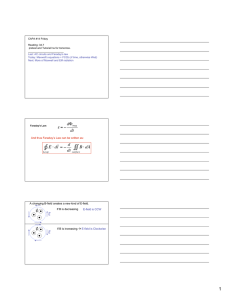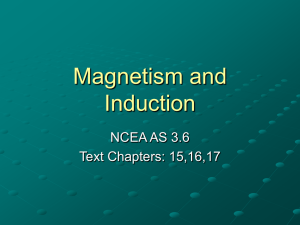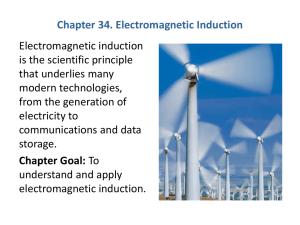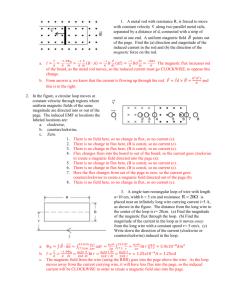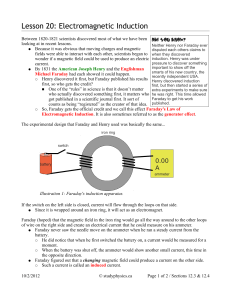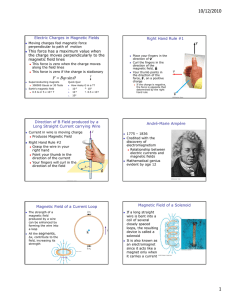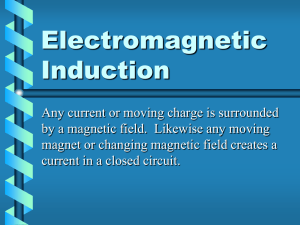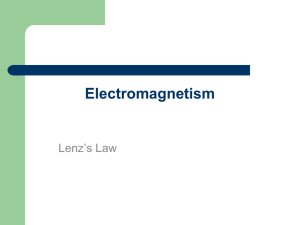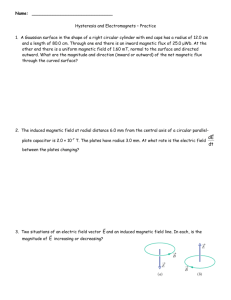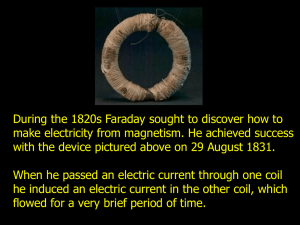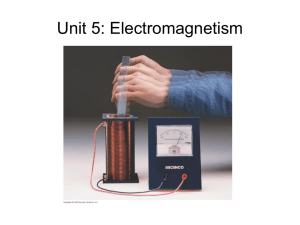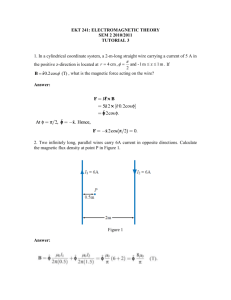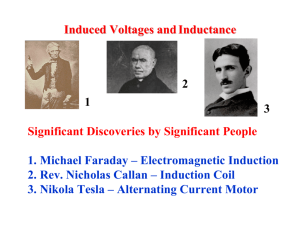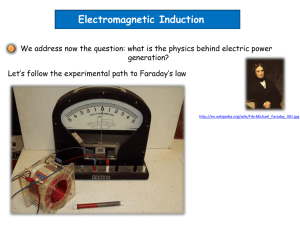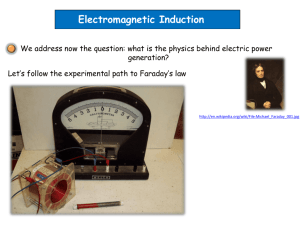General Form of Faraday`s Law
advertisement
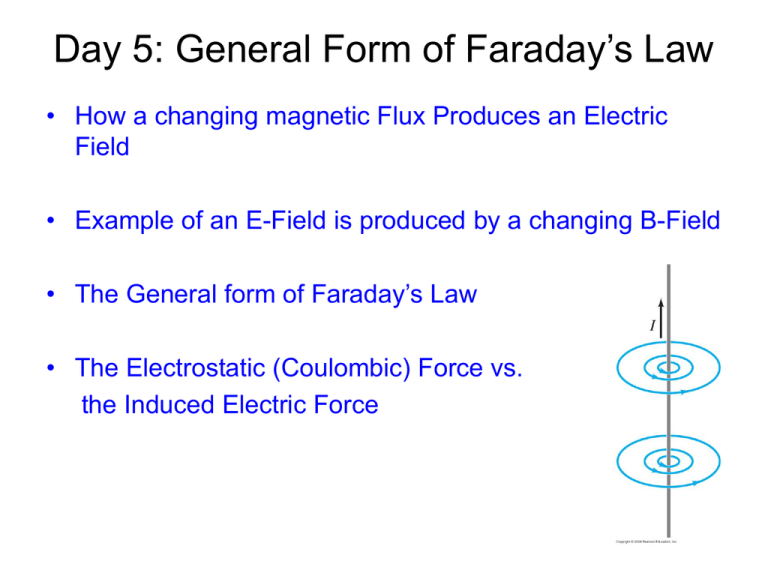
Day 5: General Form of Faraday’s Law • How a changing magnetic Flux Produces an Electric Field • Example of an E-Field is produced by a changing B-Field • The General form of Faraday’s Law • The Electrostatic (Coulombic) Force vs. the Induced Electric Force A Changing Flux Produces an Electric Field • When a current flows through a wire, there is an electric field in the wire that does the work of moving the electrons in the wire • The current moving through the wire produces a magnetic field • Conversely, a changing magnetic flux induces a current in the wire which implies there is an electric field induced in the wire by the magnetic flux A changing Magnetic Flux Produces an Electric Field E-Field moving the current Induced E-Field a b V Va Vb E dl a The EMF induced in this circuit is equal to the work done per unit charge by the electric field around a closed path E dl d B from N dt d B then E dl N dt dl b The General Form of Faraday’s Law d B E dl N dt • The integral is taken around a closed path enclosing the area through which the magnetic flux ΦB is changing • This is a more elegant statement of Faraday’s Law and is valid not only in conductors but in any region of space E-Field Produced by a Changing B-Field dB • Inside the magnet (r < r0) E r dt r02 dB • Outside the magnet (r > r0) E 2r dt 1 2 E-Field Produced by a Changing BField • Inside the magnet, the electric field increases linearly from zero (at the center) to at the edge 1 2 dB r0 dt • Outside the magnet, the electric field decreases inversely with the radial distance, beyond the edge of the magnetic field r02 dB 2r dt The Electrostatic Force is a Conservative Force • The general form of faraday’s law is a closed path integral, and the electric field produced by electric charges at rest (electrostatic field) yields: b V Vb Va E dl a • If the path is closed, then points a & b are the same points and: E dl 0 because these points are at a the same potential (ΔVa-a=0) • This follows from the fact that the electrostatic (Coulombic) force is a conservative force and that the work done per unit charge around any closed path = 0 & is independent of the path taken The Non-static Electric Force is a nonConservative Force • But in the non-electrostatic case when the electric field is produced (induced) by a changing magnetic field, then the closed integral is not zero. d B E dl dt • Therefore, the conclusion is that the forces resulting from the changing magnetic fields are non-conservative and the induced electric field is a non-conservative field !

